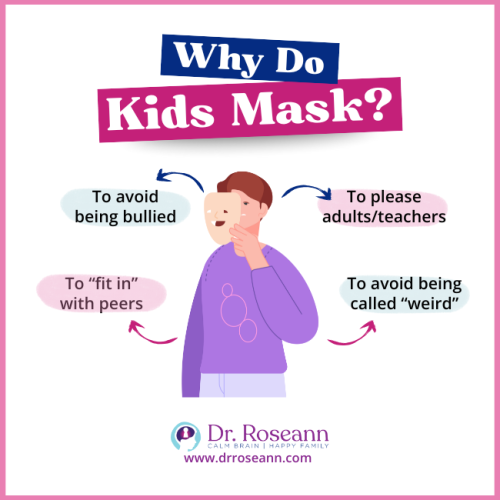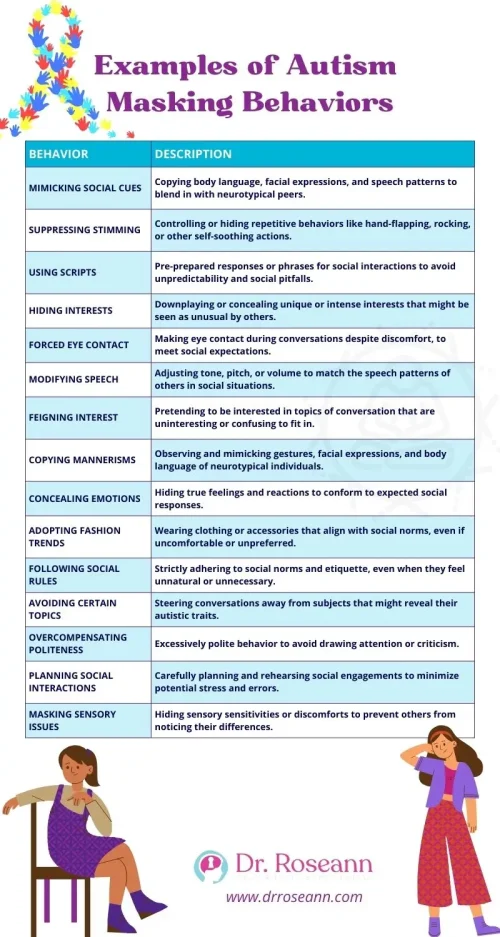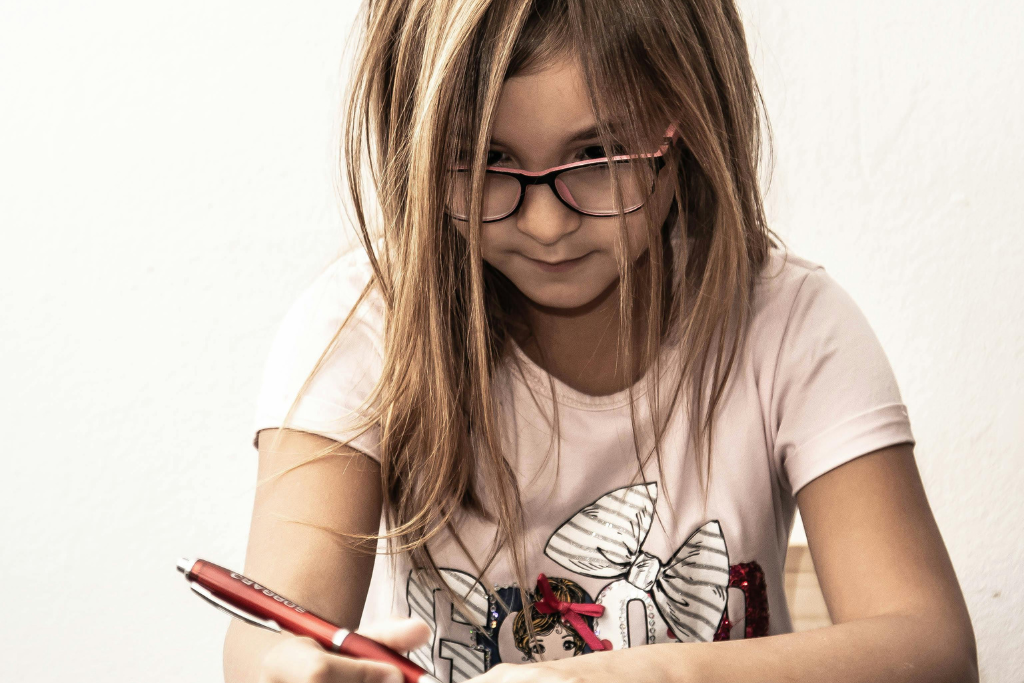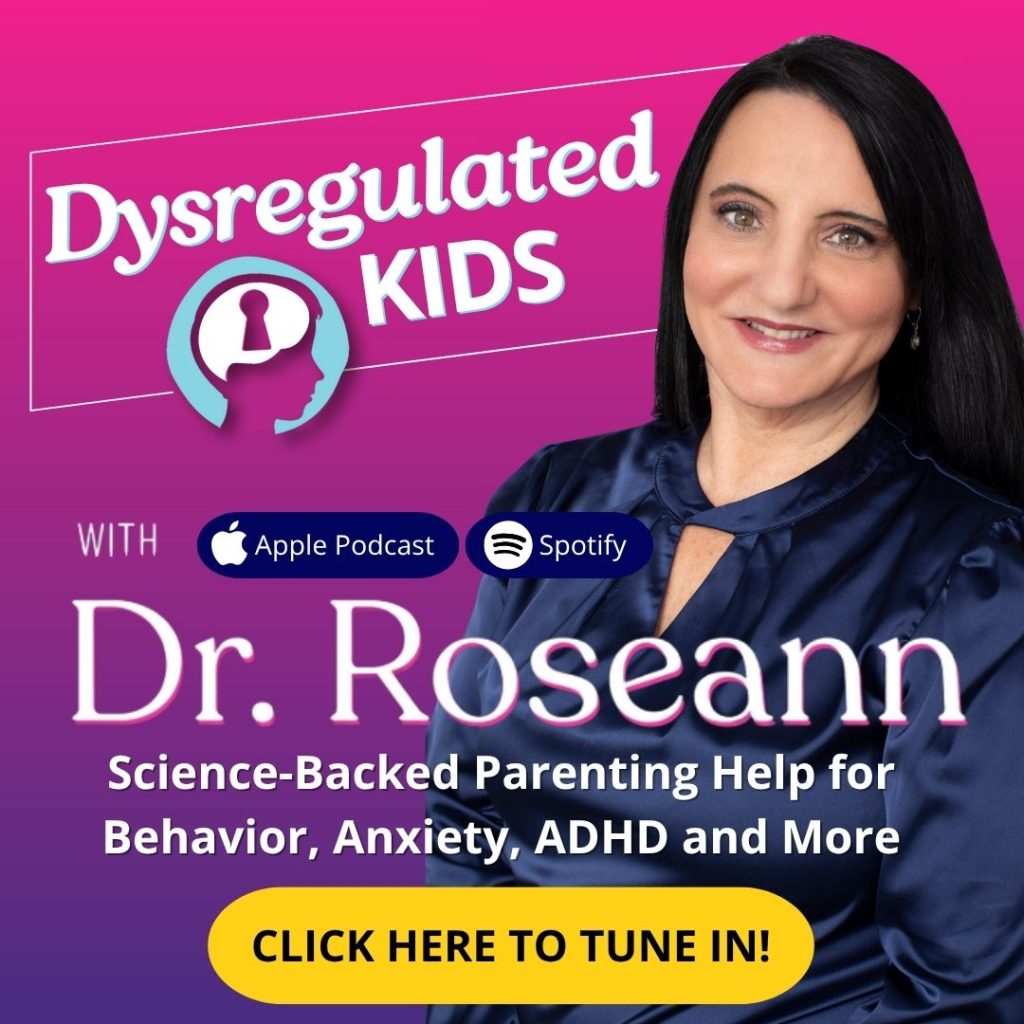Estimated reading time: 6 minutes
Many parents of autistic children don’t realize masking is at play, until the stress, anxiety, or emotional overwhelm show up louder than ever.
In this blog, you’ll learn what autism masking really means, why children do it, what its effects are, and practical steps you can take to help your child balance authenticity and adaptation.
What Is Autism Masking?
Autism masking (also called camouflaging) is when an autistic child consciously or unconsciously suppresses or hides parts of their natural behavior, traits, or preferences to blend in or to avoid misunderstanding.
Masking isn’t just “trying” — it often requires enormous energy, and may include mimicking others, scripting social situations, hiding sensory discomfort, or suppressing stimming.
Why Children Hide Their Autistic Traits
Children mask for many reasons. It often starts early, driven by pressure (social, school, family), the desire for acceptance, fear of judgment, or misunderstanding.
Key drivers include:
- Social expectations: wanting to be accepted by peers, teachers, family.
- Avoiding negativity: stigma, bullying, or being singled out.
- Learning early what “works”: children realize certain behaviors are rewarded or safe, while others cause trouble.
- Unconscious learned behavior: masking may become automatic, so the child isn’t even fully aware they’re doing it.
It’s not about bad parenting—it’s about a dysregulated brain trying to survive in environments that don’t always adapt.

How To Tell If Your Child Is Masking
It can be tricky, because masking is exactly meant to hide the traits. But there are signs you can watch for.
Warning Signs:
- The child seems calm and “fine” at school or in public, but comes home extremely exhausted or with emotional meltdowns.
- They force eye contact, suppress stimming (hand-flapping, rocking), or mimic others’ social behaviors.
- They avoid talking about their real interests or avoid things they enjoy in order to fit in.
- You notice anxiety, self-criticism, perfectionism—especially around social interactions.
Physical symptoms: headaches, sleep issues, trouble concentrating, sensory overload.

Costs of Prolonged Masking
Masking helps in the short term, but over time it can lead to big emotional, social, and developmental costs.
Potential consequences:
| Area | What it looks like | Why it matters |
|---|---|---|
| Emotional Health | Anxiety, depression, shame, feeling like a fraud | Keeps self-esteem low and can trigger mental health challenges |
| Autistic BurnoutExhaustion, shutdowns, inability to cope | Exhaustion, shutdowns, inability to cope | Long recovery periods; impacts daily functioning |
| Identity & Self-Acceptance | Feeling disconnected from self; hiding preferences and quirks | Undermines authenticity and trust in oneself |
| Relationships | Difficulty forming deep connections; strain because the real self is only shown in safe spaces | Can lead to misunderstandings & isolation |
| Development | Missed opportunities to leverage strengths, lack of self-advocacy skills | Limits growth, self-confidence, and adaptive coping |
How Can Parents Support Both Authenticity and Adaptive Skills
You’re not choosing between masking versus total exposure. The goal is supporting your child to be who they are and helping them adapt where needed—without exhausting themselves.
Practical strategies:
- Create safe spaces where your child can drop the mask: home, certain days, specific people. Emphasize authenticity.
- Validate what you see: when you notice them masking, say “I saw how hard you worked to be like everyone else today.” This helps them feel seen.
- Teach emotional regulation and self-awareness: help them name feelings, understand when their brain is overwhelmed. “Let’s calm the brain first.”
- Model authenticity: show them you have moments where you don’t mask—that it’s OK.
- Set boundaries & rest time: build in downtime after social events; allow recovery.
- Partner with schools / therapists: educate teachers about masking, so expectations are adjusted and support is given.
- Encourage special interests: these are often the parts children mask but also where joy and authenticity lie.
Real-Life Stories:
(When Masking Shows Up and When Letting Go Helps)
Story 1: Oman, Age 10
Oman pushed himself to sit through the noise of a busy classroom, hiding how overwhelmed he felt. By the time he got home, the headaches and tears would come. Once his parents worked with the school to provide noise-cancelling headphones and a quiet corner, he finally had a choice—he didn’t have to mask all the time.
Takeaway: The right accommodations ease pressure and give kids the freedom to be themselves.
Story 2: Myla, Age 7
Myla copied whatever games her friends wanted to play, hoping that made her more likable. But inside, she longed to talk about dinosaurs and space. When her mom encouraged her to share her real interests, she found a friend who loved them too—and felt such relief.
Takeaway: Authenticity creates friendships rooted in who your child really is.
Story 3: Jan, Age 9
Jan stayed silent in class, even when he didn’t understand directions. He’d rehearse what the teacher might ask instead of raising his hand. A speech therapist and supportive teachers helped him practice speaking up, and with adjustments at school, Jan’s confidence grew.
Takeaway: Gentle support—not pressure—makes it safe for kids to be vulnerable and find their voice.
Authenticity matters. Masking might feel like the only way to get by, but it often comes at a steep emotional cost. As parents, you can help by creating safe spaces, validating real feelings, and helping your child build the ability to self-advocate.
You’re not alone. It’s not bad parenting—it’s a challenge of raising a dysregulated brain in a world that often expects regulation. And with support, things can shift. It’s gonna be OK.
Parent Action Steps:
FAQs
Can my child be masking without me knowing?
Yes. Masking can become unconscious—behaviors like stimming suppression or social mimicry may have become second nature. You might see fatigue, anxiety, or emotional shutdowns without knowing what’s behind them.
Is masking always bad?
Not always. Short-term masking can help in new or stressful situations. But when masking is constant, it can damage mental health and sense of identity. The goal is balance.
When should I consider professional help?
If you notice frequent emotional meltdowns, deep anxiety, depression, or your child is withdrawing—especially when masking is clearly overwhelming. Working with a therapist, occupational therapist, or psychologist familiar with autism helps.
Citations
Wang, Q., Jia, S., Cai, Z., Jiang, W., Wang, X., & Wang, J. (2025). The canonical correlation between executive function and social skills in children with autism spectrum disorder and potential pathways to physical fitness. Scientific Reports, 15, Article 10367. https://doi.org/10.1038/s41598-025-94334-1
Tse, A. C. Y., Liu, V. H. L., Lee, P. H., Anderson, D. I., & Lakes, K. D. (2024). The relationships among executive functions, self-regulation, and physical exercise in children with autism spectrum disorder. Autism, 28(2), 327-341. https://doi.org/10.1177/13623613231168944
Hilton, C. L., Collins, D., Jones, J., Flanagan, J., Carillo, C., & Ratcliff, K. (2025). Outcomes from 35-minute daily exercise program for autistic adolescents: Fit Club program effects on executive functioning, planning/organizing, and flexibility. Research in Autism Spectrum Disorders, 119, Article 102504. https://doi.org/10.1016/j.rasd.2024.102504
Dr. Roseann Capanna-Hodge is a licensed mental health expert that is frequently cited in the media:
- Parents Are Your Kid’s Meltdowns a Sign of Rejection Sensitive Dysphoria?
- Scary Mommy What Is Self-Regulation In Children, And How Can You Help Improve It?
- Medicinal Media Different minds grow awareness: understanding the autism spectrum
Always remember… “Calm Brain, Happy Family™”
Disclaimer: This article is not intended to give health advice and it is recommended to consult with a physician before beginning any new wellness regime. *The effectiveness of diagnosis and treatment vary by patient and condition. Dr. Roseann Capanna-Hodge, LLC does not guarantee certain results.
Are you looking for SOLUTIONS for your struggling child or teen?
Dr. Roseann and her team are all about science-backed solutions, so you are in the right place!
©Roseann Capanna-Hodge










